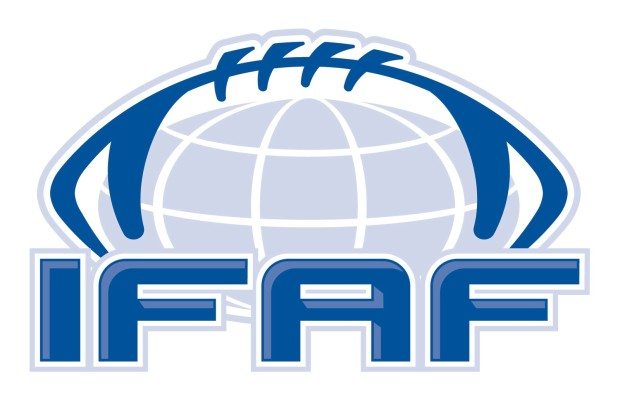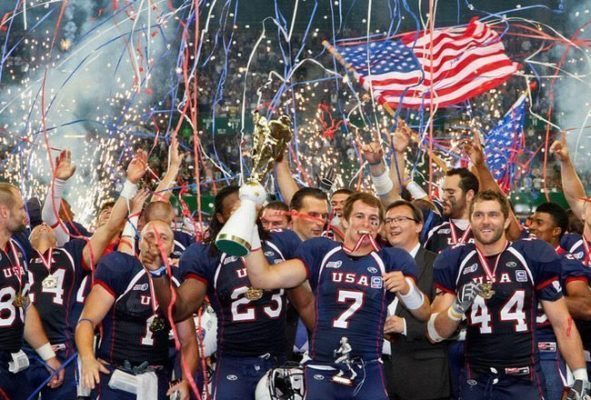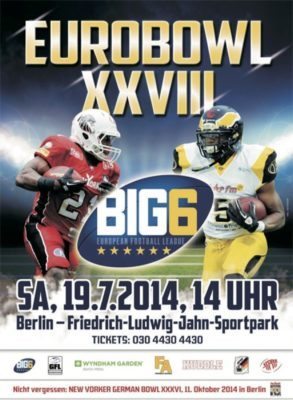American football to get new look in Europe starting in 2015 thanks to IFAF

Structural changes on the horizon for American Football in Europe
[su_dropcap]W[/su_dropcap]ith the American football season in Europe gradually drawing to a close, and the seasons of many leagues already over, major changes in the structure of the game are on the horizon. Next year will see a total rearrangement in the organization of the game on the European continent, bringing with it new tournaments and decision makers.
Tommy Wiking, President of the International Federation of American Football, or IFAF as it is commonly known, began, in keeping with the IFAF Congress Decision of 2012, implementing major plans for restructuring the organization of American football throughout the world. But it has not progressed smoothly everywhere.
Where it all began
First let’s take a look at how IFAF came to be. The first national American Football federation outside of the United States was actually founded in Canada back in 1896. Japan, an early adopter of American football, established its national federation in 1936 and the first European federation was formed in 1976.
Since then, the sport has experienced incredible growth, especially in Europe, culminating in the founding of the first European Federation, EFL, in 1981. It was later replaced with the European European Federation of American Football (EFAF) in 1993. Five years later (1998), the International Federation of American Football was officially formed.
The Age of IFAF
As the international governing body IFAF oversees American football and its three disciplines: tackle, flag and beach football.
In 2003, IFAF became a provisional member of SportAccord, which represents the interests of sports federations throughout the world, and a full member in 2005.
Participation in competitions and tournaments is a cornerstone of IFAF’s objectives and the inaugural IFAF Senior World Championship was played in Palermo, Italy, in 1999. Since then it has been played every four years under the auspices of IFAF.
Tommy Wiking has been president of IFAF for the past eight years (he was first elected to this position in 2006), and has overseen many of the changes in the structure of the game throughout the world.
“We have worked hard over the years, to create a uniform, streamlined structure and organization in every region in the world,” he said. “To this end, we have established five separate continental executive committees headed up in each area by representatives from each of the federations in those countries.”
The five IFAF organizations are IFAF Europe, IFAF Africa, IFAF Oceania, IFAF Asia and IFAF Americas. Each one operates independently, but with financing and accounting funneled through IFAF‘s head office. Each committee, which consists of four to nine members, is elected for a four year term. The new structure began to take shape in 2012 and four of the five committees were formed without a hitch. IFAF Europe, on the other hand, had a more contentious beginning as the powerful European Federation of American Football (EFAF) opposed the new structure.
EFAF v. IFAF
It took two years and two bitterly-fought court challenges from the former EFAF, before the EFAF general assembly unanimously decided to dissolve EFAF in 2014 and IFAF Europe took its place. In July, Goran Nisavic, from Serbia,was elected unanimously as chairman of IFAF Europe with Gregor Murth from Austria as his VP.
Goran Nisavic is excited: “We realize the problems we face and how much work must be done.” IFAF Europe has broken the work down into four distinct areas for improvement.
“We have to improve our structure,” he continued, “and find the right people who want to work.” He also tabbed improving finances, game development and competitions as the other three main priorities. Each of these areas will undergo a fundamental upgrade in approach and organization.
Solidifying the IFAF will eventually lead to greater marketing opportunities. Tapping the budgets of European bookmakers could expand the IFAF’s popularity, given the Federation can offer eager punters consistent action. In turn, bookies will need to adopt a wagering menu friendly to American football. Most popular soccer bets aren’t applicable to football beyond picking the outright winner.
Tournaments the Key
The competitions segment is obviously the face of the organization and the key to drumming up support for the game. Major sponsors will jump on board if they feel there is enough exposure for them. Both Viking and Nisavic are aware of how crucial the tournaments held throughout the world are to showcasing the game.
“For the past few years, our club tournaments in Europe have been very expensive for teams, preventing many of them from participating,” said Nisavic. “We want to arrive at a true champion every year, but we want to design a structure that will enable participation from all countries and levels.”
Many people are confused by the various tournaments and the importance of winning each one. And many teams objected to the expense, and extravagance, involved in the organization of these tournaments.
“We have already changed a part of that approach,” said Wiking. “For example, IFAF has strict travel regulations that only allow economy flights.”
Although that might not seem like such a drastic step, it is sending a clear message to the clubs and federations, that IFAF is there for them, and not the other way around.
Eurobowl
The name of at least one tournament is very marketable and has established a brand, if you will: EuroBowl. Essentially the winner of this tournament every year is crowned the best team in Europe, and becomes the target, of course of every team on the continent. Normally, it involves an elite group of eight teams that get whittled down to two finalists over a three month period in the spring. The EuroBowl final in early to mid July is the most anticipated club tournament of the year. This year, for instance, the Berlin Adler won its first EuroBowl championship in four years beating the Braunschweig New Yorker Lions in a thriller.
“We would like to have one top competition in Europe and it will be a challenge to find right format to suit the needs of participating teams and to have one legitimate European Champion,” said Nisavic.
The first step was the IFAF Europe Champions League tournament held this year and won by the Helsinki Roosters from Finland, in a great final against an underdog Serbian squad, the Vukovi Beograd.
“We realize that there were glitches with the running of the competition, but we are working to smooth them out,” continued Goran. “In my opinion, it was a good start.”
There is no question that IFAF Europe has its work cut out. But with IFAF bringing more countries into the fold and assuming a structure that enables better communication and cooperation on an international scale, this could be the age of American football – the Beautiful Game!
Learn more about the IFAF below.

